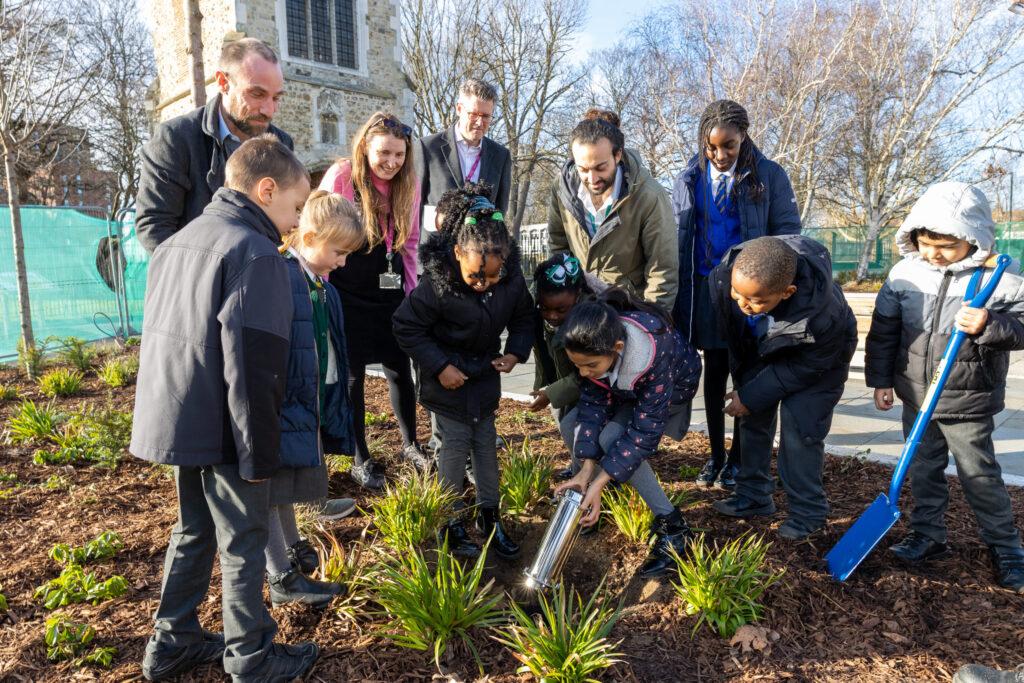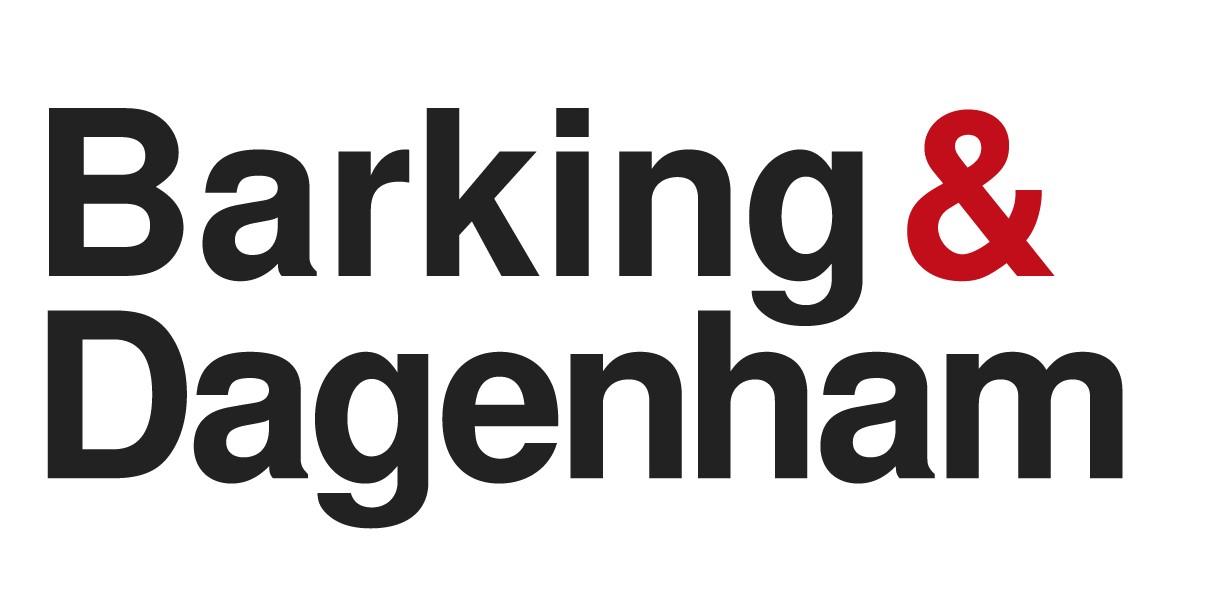A time capsule celebrating the past, present and future of the Curfew Tower in Barking has been buried by pupils from years one to six at St Joseph’s and St Margaret’s Primary Schools. As part of the project, children were asked to write experiences of Barking and imagine what it’s future might look like.
The Curfew Tower (formerly the Fire Bell Gate) is the only remaining gateway to Barking’s Saxon Abbey. It is a Grade II listed monument which was originally built in 1370. Its purpose was to remind people to put out all fires and lights before the nightly curfew – a practice which didn’t cease until 1900. Rich in history, the ‘Abbey Gate’ is the only gateway to Barking Abbey still standing, following its closure and demolition during Henry VIII’s reign.
As part of the landscaping works delivered by Be First (the council’s development and regeneration company) and contractors T Loughman & Co Ltd, the public realm around the tower will become an attractive and useful open space to the local community. While improving the current space, the works will also promote the local heritage too. A bronze model of Barking Abbey, with the Curfew Tower and traditional church path leading up to it will be installed, as well as up-lighting of the ancient tower.
To celebrate this, both St Joseph’s and St Margaret’s Primary School have been learning more about the Curfew Tower and its exciting heritage through a project which saw them bury a time capsule last Monday (30 January). All the children have produced written work and illustrations on Barking – its history and future. The burial took place on site, and to mark the occasion, the event was attended by the development team at Be First as well as pupils and teachers from both schools.
David Harley, deputy development director at Be First, said:
“Working with the two schools to move this project forward has been extremely rewarding. We’re proud to celebrate Barking and Dagenham’s history, carefully delivering works and improvements while retaining the areas heritage and character. It’s important the next generation learn more about the area they live in and can celebrate being part of this fantastic community”.
Joel Hartley, history lead and year two teacher at St Joseph’s Primary School said:
“This is exactly the kind of project we want to involve the children in. It’s a brilliant opportunity for them to connect with their local community and learn more about its history. It was a chance for them to express themselves and be creative too, by looking into the future and imagining what it could look like.
“We’d like to thank Be First for involving us in this project and inviting us to take part in the burial.”
The site will be open to the public in March this year. The children’s work has been placed in a stainless-steel time capsule which will be discovered at a later date. The project is funded by The National Lottery Heritage Fund, which also includes funding for the restoration of high street buildings.



